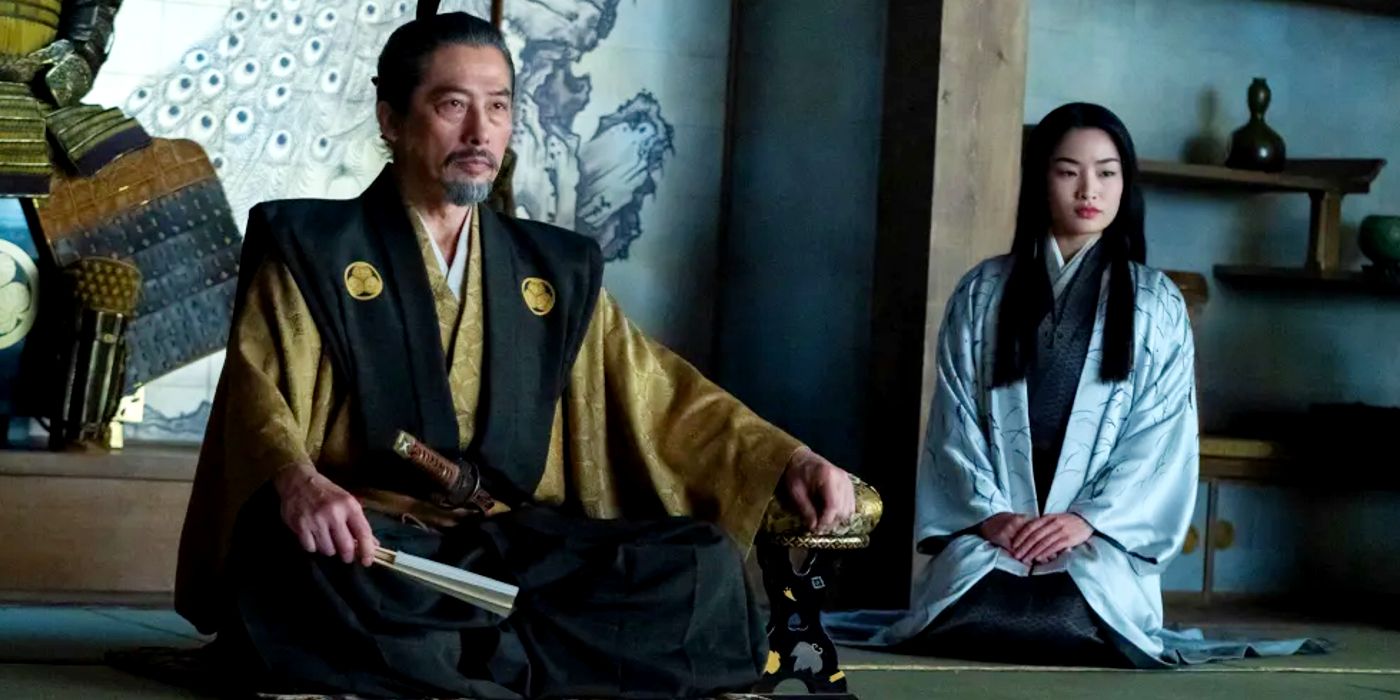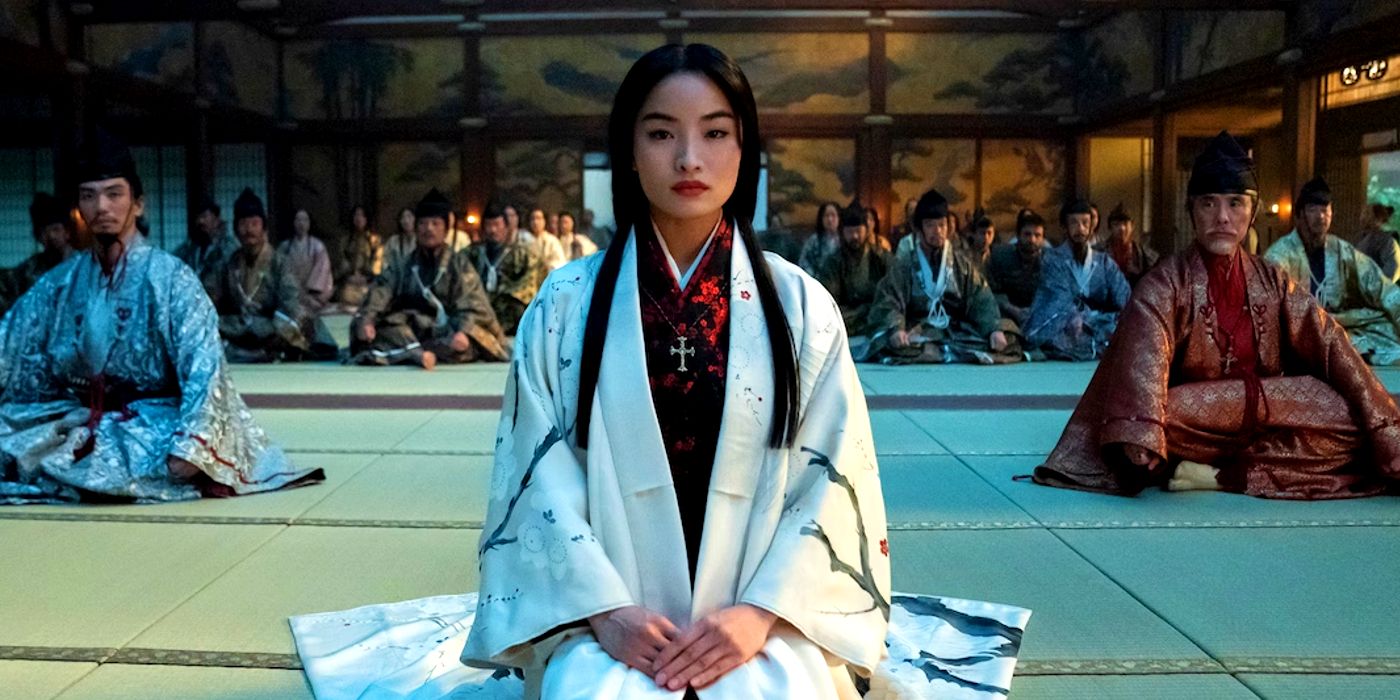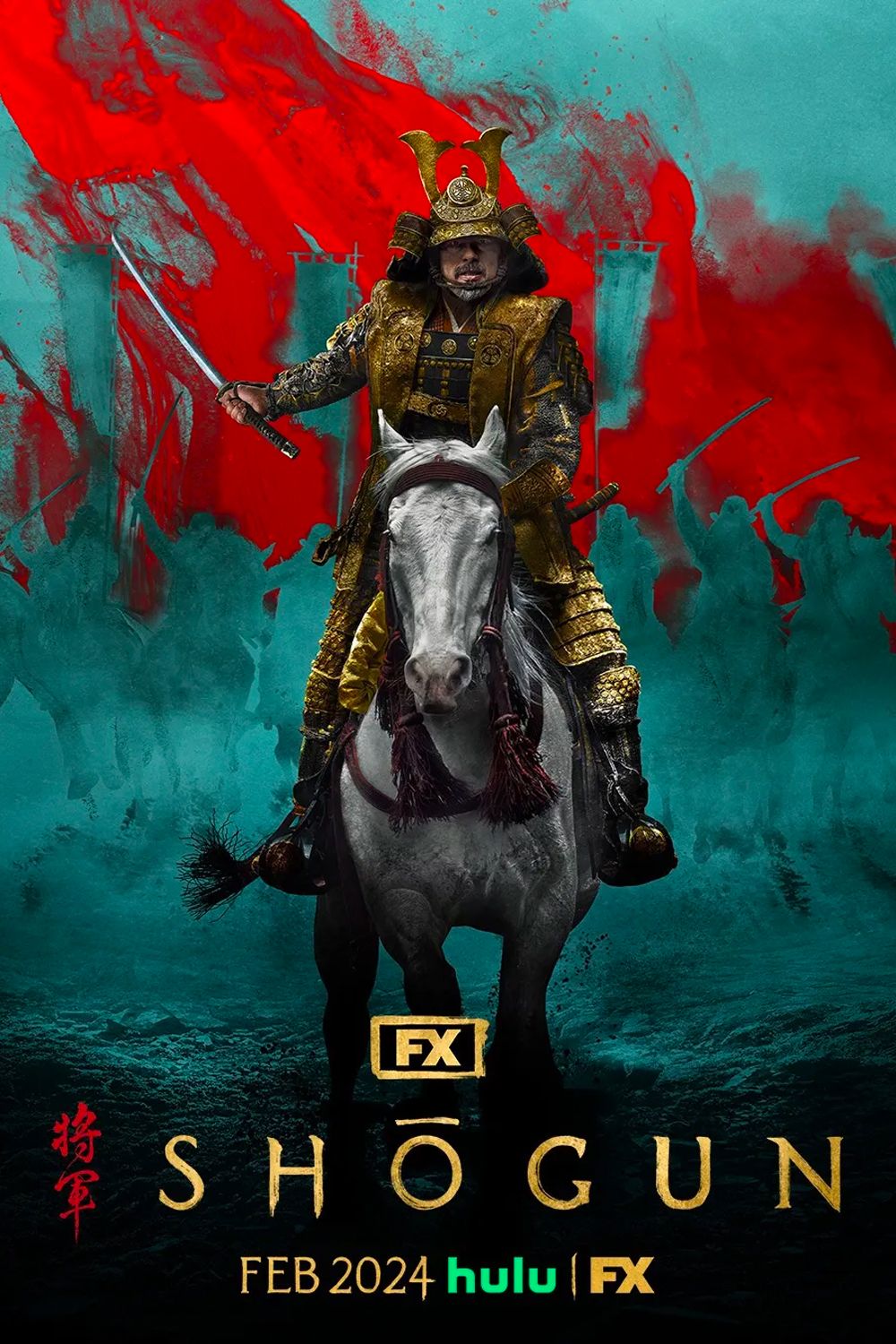The Hulu/FX historical epic series Shōgun features a variety of Japanese terms and locations to add to its expert authenticity. Featuring an outstanding ensemble cast, Shōgun is led by Cosmo Jarvis as John Blackthorne and acclaimed Japanese actor Hiroyuki Sanada as the feudal Lord Yoshii Toranaga. The series begins with Blackthorne washing up on Japanese shores and being taken prisoner. Blackthorne and Toranaga develop an unlikely alliance when they realize they have a common enemy. The highly anticipated Game of Thrones caliber series premieres on February 27 on Hulu and Disney+ and airs on FX at 10 PM EST.
Based on the stellar reviews for Shōgun, which have earned it a perfect 100% Rotten Tomatoes score, the Hulu/FX series is expected to be one of the greatest limited series of the entire year. The series was created by Justin Marks (Top Gun: Maverick, The Jungle Book) and first-time television writer Rachel Kondo based on the novel by James Clavell. Shōgun takes place in the year 1600 in feudal Japan and is based on the real-life relationship between shogun Tokugawa Ieyasu and English shipbuilder and navigator William Adams, who became the first-ever Western samurai in recorded history.

William Adams Explained: The Real Life Version Of Shogun’s John Blackthorne
Shōgun’s John Blackthorne is inspired by the real-life English shipbuilder and navigator William Adams, who became the first-ever Western samurai.
Shogun Title & Japanese Historical Meaning Explained
Tokugawa Ieyasu, who is the real-life inspiration for Shōgun’s protagonist Yoshii Toranaga (Hiroyuki Sanada), was the founder and first shōgun of the Japanese Tokugawa Shogunate which ruled for nearly three centuries. The term “shōgun” represents the official title of Japan’s national military ruler as designated by the Emperor. In feudal Japan, which spanned from the early 1600s to the late 19th century, shōguns were appointed as a line of military governors until the Meiji Restoration. The direct Japanese translation is “barbarian-quelling generalissimo”.
According to Britannica, “The title was first used during the Heian period, when it was occasionally bestowed on a general after a successful campaign. In 1185 Minamoto Yoritomo gained military control of Japan; seven years later he assumed the title of shogun and formed the first “bakufu”, or shogunate.”Three major shogunates, the Kamakura, Ashikaga, and Tokugawa, effectively led Japan from 1192 until 1868, which accounts for a large part the nation’s history. The term “shogun” is still used to refer to a powerful behind-the-scenes leader (via National Geographic).
Shogun’s Location Glossary

Osaka – The fortified settlement built in the early 16th century, originally known as Ishiyama. It was taken over and rebuilt by the Taikō and officially renamed Osaka. It is currently one of the biggest major cities in Japan alongside Tokyo and Nagoya with a population of roughly 2.7 million according to the 2020 census. Osaka was a flourishing Japanese city during the Edo period and was a center of Japanese culture.
Edo – A city established in 1590 on the former site of a medieval castle. In 1868, it would become the capital of Japan, now known as Tokyo. The Edo Period refers to the nearly three centuries from 1603 until 1868 when the Tokugawa shogun family ruled Japan. The era is named after the city of Edo which is where the Tokugawa shogunate had its government.
Macao – A special administrative region of China that was a significant trading location for the Portuguese during the start of the 17th Century. It acted as an important trading post for Japan during the beginning of the Edo Period and opened up new trading opportunities and resources between Japan and Portugal, which is chronicled in Shōgun.
Nagasaki – An important trading post between the Portuguese and the Japanese during the 16th and 17th centuries. The Portuguese enabled more trade between the Chinese and Japanese at Nagasaki while also bringing in the increased influence of Jesuit missionaries into Japan.
Magellan’s Pass – Better known as the Straight of Magellan, Magellan’s Pass is an important shipping route for vessels traveling between the Atlantic and Pacific named after the Portuguese explorer Ferdinand Magellan. William Adams, or John Blackthorne in Shōgun, used Magellan’s Pass to inadvertently get to Japan.
Shogun’s Character Terminology

Anjin – Japanese for “pilot,” the name by which John Blackthorne is called when he arrives in Japan in Shōgun.
Ashigaru – A foot soldier. They fought with swords, spears, bows, and guns, under the command of samurai. Ashigaru made up the majority of a warlord’s army.
Busho – A warlord. These samurai lords had varying degrees of power and wealth and were in military and administrative control of a fief.
Consort – A partner in marriage or spouse. A man was permitted a single legal wife, and his other wives were known as consorts or concubines. A legal marriage was a political partnership chosen by the lord or father, while a consort could be chosen by the samurai. Children born of consorts were legitimate and could become heirs.
Council of Regents – A governing body of high-ranking bushos put in place to rule equally until the Taikō’s heir comes of age. In Shōgun, the Council of Regents consists of Lords Toranaga, Ishido, Kiyama, Ohno and Sugiyama.
Daimyo – Feudal lords, landowners, and subordinates to shoguns who were leaders of powerful warrior samurai clans and controlled provinces of Japan.
Fief – A piece of land given by a feudal overlord in exchange for devotion and allegiance.
Kaiken – A small dagger that was given to all married samurai women for protection. They were kept close to the chest, inside the kosode. In the Edo period, when obi (belts) grew wider, the kaiken could be worn on the hip.
Koshō – A young man serving a busho, a koshō acted as a bodyguard, secretary, attendant and sometimes a lover for their lord. Similar to a squire, a koshō was the son of another high-ranking samurai. When they came of age, they would become samurai themselves.
Samurai – A Japanese warrior and the ruling class of Japan from the 12th to the 19th centuries, comprising about six percent of the total population during the Edo period.
Shinobi – Local warriors, ashigaru, or outlaws who carried out acts of espionage, infiltration, arson, looting, and guerrilla warfare such as ambushes and assassinations. They were later romanticized as “ninjas” and fictionalized as supernatural assassins.
Taiko – The honorary title given to a former kampaku (chief advisor to the Emperor) when he retires. In Shōgun, the Taikō appoints the Council of Regents to rule after his death until his young son and heir comes of age.
Ronin – A type of samurai in feudal Japan that had no lord or master. In some cases, a ronin had also cut off all ties with his family or clan and is generally considered a masterless drifter or “wave man”.

Shogun
Shogun is an FX original mini-series set in 17th Century Japan. Shogun follows John Blackthorne, who becomes a samurai warrior but is unknowingly a pawn in Yoshii Toranaga’s plan to become Shogun. The series stars Cosmo Jarvis as John Blackthorne and Hiroyuki Sanada as Yoshii Toranaga, along with Anna Sawai, Tadanobu Asano, and Yûki Kedôin.
- Cast
- Cosmo Jarvis , Hiroyuki Sanada , Anna Sawai , Tadanobu Asano , Yûki Kedôin
- Seasons
- 1
- Network
- FX
- Streaming Service(s)
- Hulu
- Writers
- Maegan Houang , Rachel Kondo , Justin Marks , Emily Yoshida
- Directors
- Frederick E.O. Toye , Jonathan van Tulleken





